Oakwell Hall gardens
There are six wonderful gardens to see at Oakwell, most of them reflecting the design styles of 1690 and providing a stunning setting for the historic hall.
The gardens
Access is quite easy, with level footpaths, a ramp and a good footpath network. Wheelchair users may not have full access to all paths, though further access work is planned.
To create the gardens, months of research were carried out into gardens of the 17th Century. The Tradescant Garden in Lambeth provided valuable insights into gardens of the period. 17th Century gardening books found in a Leeds library provided original information on garden layout and the plants, tools and techniques used in that era. Local information in Huddersfield archives helped to plan a garden appropriate to the hall and setting.
Leaving the rear of the hall visitors climb a short flight of steps and find themselves in a parterre or compartments. Many of the compartments are based on the 'Yorkshire Lozenge' which is found in woodwork and furniture in the Hall - a design local to the area. The gravel for the octagonal beds is locally sourced river gravel. All the plants in the gardens would have been growing in this area in 1690.
The trellis, which cuts across the garden is based on 17th Century drawings in a Dutch gardening book. The trellis and hop pyramids are painted green and were known as 'carpenters work'. Behind the trellis is an area planted with roses and the back wall of the garden supports heritage espalier apple trees. Many of the beds are edged with lavender, filling the garden with scent and colour and are covered with bees and butterflies throughout the summer.
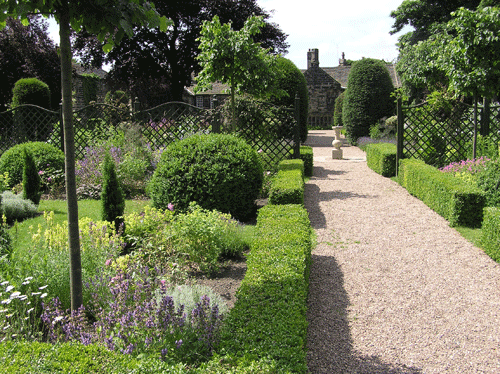
The orchard features a fascinating collection of fruit trees dating back to the 1700s, with historical species of apple such as:
- Brown Lees Russet
- Hunthouse
- Lady Sudeley
- Grenadier
The orchard often plays host to educational activities and workshops on vegetable growing with local schools. It is a lovely place to sit and watch the birds on the feeder.
You can also relax in the orchard on picnic benches and enjoy a drink or a meal from the adjacent Oaktree Cafe.
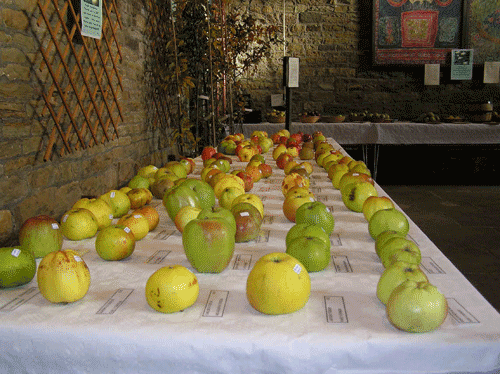
The arboretum features over thirty trees that would have been available to gardeners of the 1700s. These are mainly trees from Europe and the Americas which plant collectors were introducing at the time.
The majority of the trees planted here are around thirty years old, with some newer additions. Trees include:
- Sugar maple
- Indian bean tree
- Tulip tree
- Paper birch
- False acacia
The arboretum is particularly attractive in spring when it is full of daffodils and in autumn when the leaves are showing colour.
You can reach the arboretum from a gate at the end of the walled garden or via the orchard.
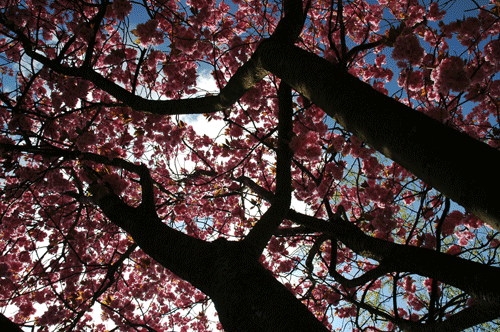
The herb garden, an aromatic delight, is next to Oakwell Hall kitchen. It features an interesting array of 17th Century culinary scent and medicinal herbs along with a few specimen plants such as a large Bay tree and a Fig.
The herb garden is well used by schoolchildren who learn the uses of herbs such as Lavender, Tansy and Wormwood in a Tudor house.
This garden, directly in front of the Hall, has been designed as a complete contrast to all the other areas of the park and gardens. Planted with a mixture of plants which provide a contemporary theme it complements the historic nature of the other gardens.
Phormiums and Cordylines supply dramatic architectural interest, their spiky forms are echoed in an interesting collection of Irises and Kniphofia, which bring colour to the garden as the seasons pass. A collection of perennial grasses brings a delicate contrast to these solid shapes as well as providing movement - all this with the solid, organic shapes of topiary specimens, long established in the garden.
With its striking colour scheme and strong architectural forms, the front garden certainly makes visitors aware of a step back in time as they move through to the period gardens at the rear of the hall.
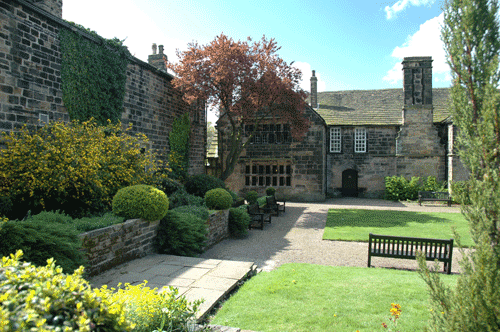
Situated to the rear of the arboretum the wildlife garden was created from a once overgrazed field. its aim is to attract wildlife of all kinds.
It now features a mixture of wildlife habitats including a pond, a wildflower meadow, a cornfield meadow and coppice woodland.
This garden is where much of Oakwell's schools work takes place, with children going pond dipping or looking for 'minibeasts'.
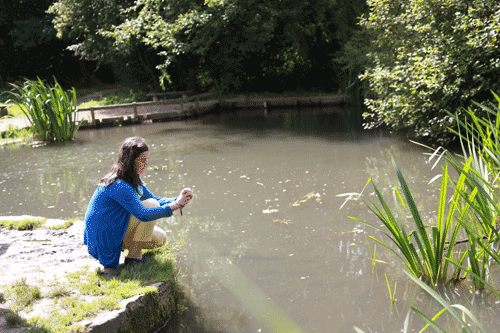
Garden awards
The gardens which surround the hall, including the walled garden and arboretum, received a Gold Award in Yorkshire in Bloom.
Was this information useful?
We'd like your feedback to improve the Kirklees Council website and the information we provide.




